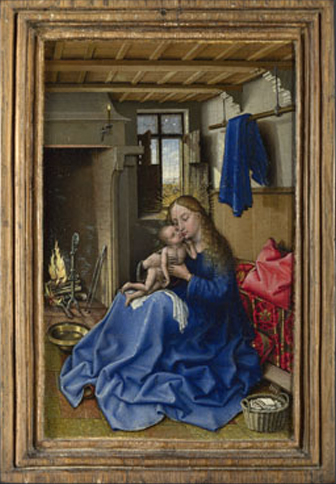ART HAS ALWAYS been a form of redemption, a transfiguration of the commonplace. The very act of turning something into an image, whether it is a bison traced on the wall of a cave or a milk jug painted by Chardin, alters and aggrandises it. Even the simplest representational picture carries an occult charge. Art is transubstantiation, and the eucharistic ritual of the Mass, where wine becomes blood and bread flesh, has a lot in common with the primitive and ritualistic activity we call painting.
Painting and religion have always had a close and often uneasy relationship with one another. To be an artist is to arrogate for oneself the powers of divinity. Painting transforms the mundane, both metaphorically and materially. Painting is itself made out of ordinary things that have been transfigured, the base matter of earth or oil or ground-up stone. Every painter is a shaman.
Two tiny pictures attributed to Robert Campin, a painter who worked in Tournai in the southern Netherlands in the first half of the 15th century, are the subject of the latest display in the ''Brief Encounters'' series at the National Gallery. One is from the museum's own permanent collection, one has been loaned by the Hermitage in St Petersburg, and they share a common theme: The Virgin and Child in an Interior. But what they both seem to be about, at a deeper than merely iconographic level, is the relationship between the everyday and the miraculous. Their true subject is the elevation of the mere, the making sacred of the real. It is the essence of the story they tell, and the essence of their nature as images. They propose a subtle congruence between the miracles of Christian legend and the miracle of art.
In each painting, an entirely...

The sacrament of holy oils
23-02-1993

